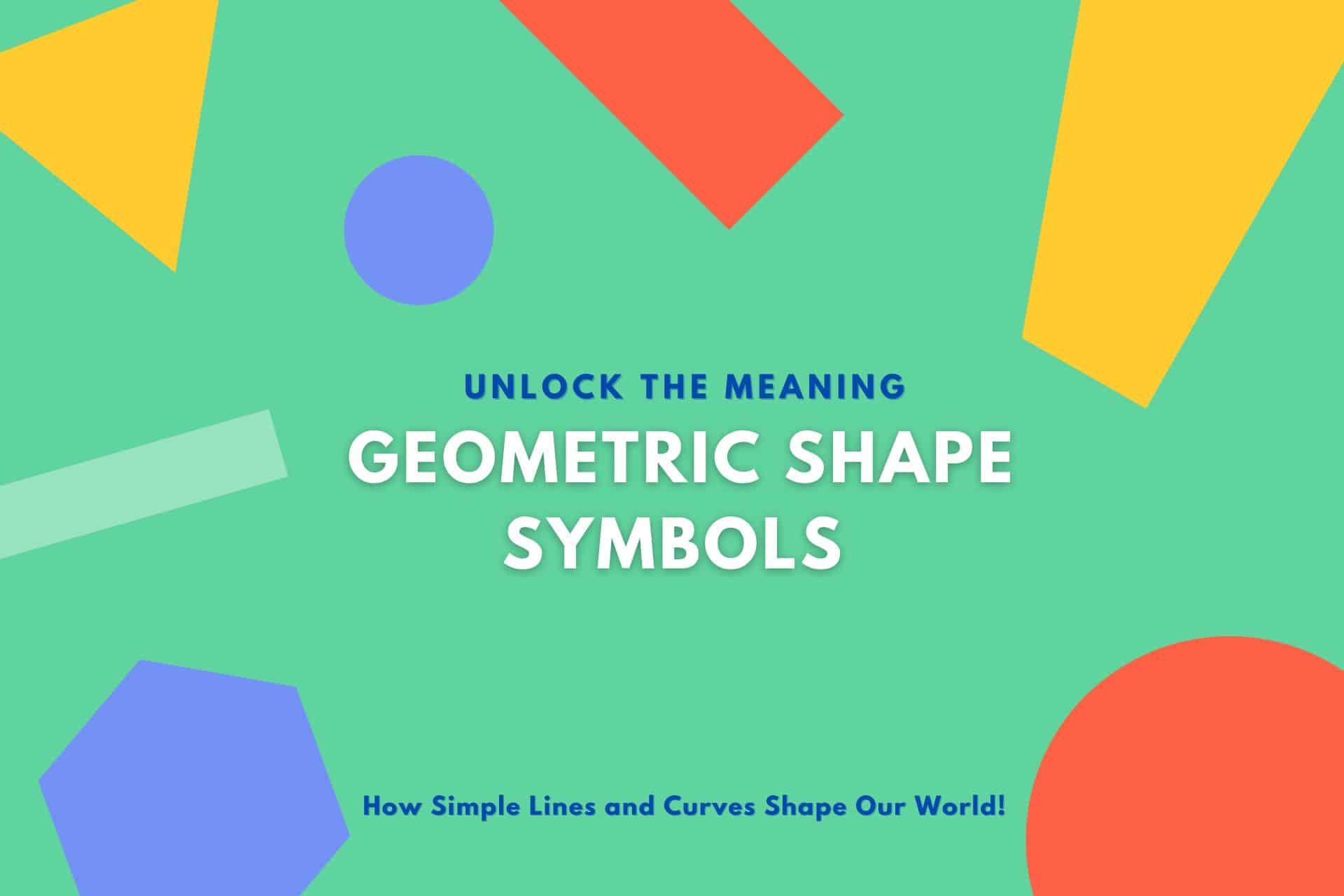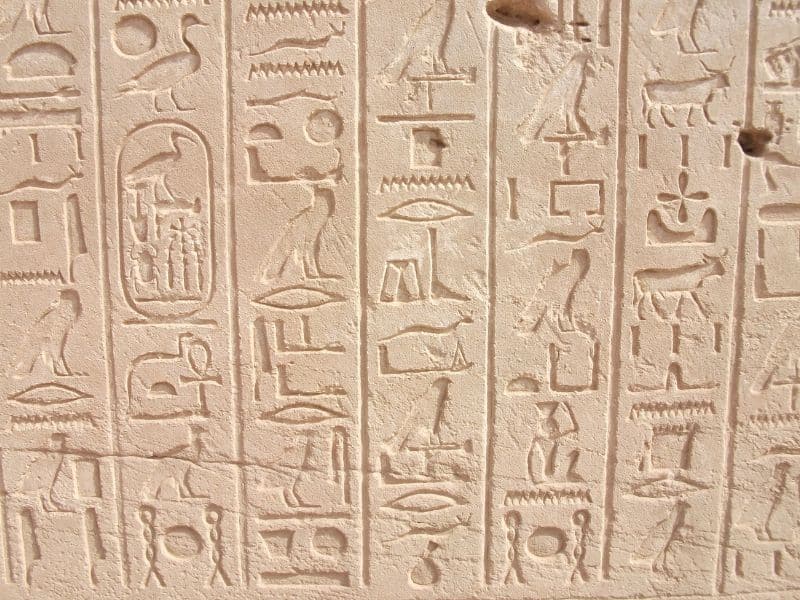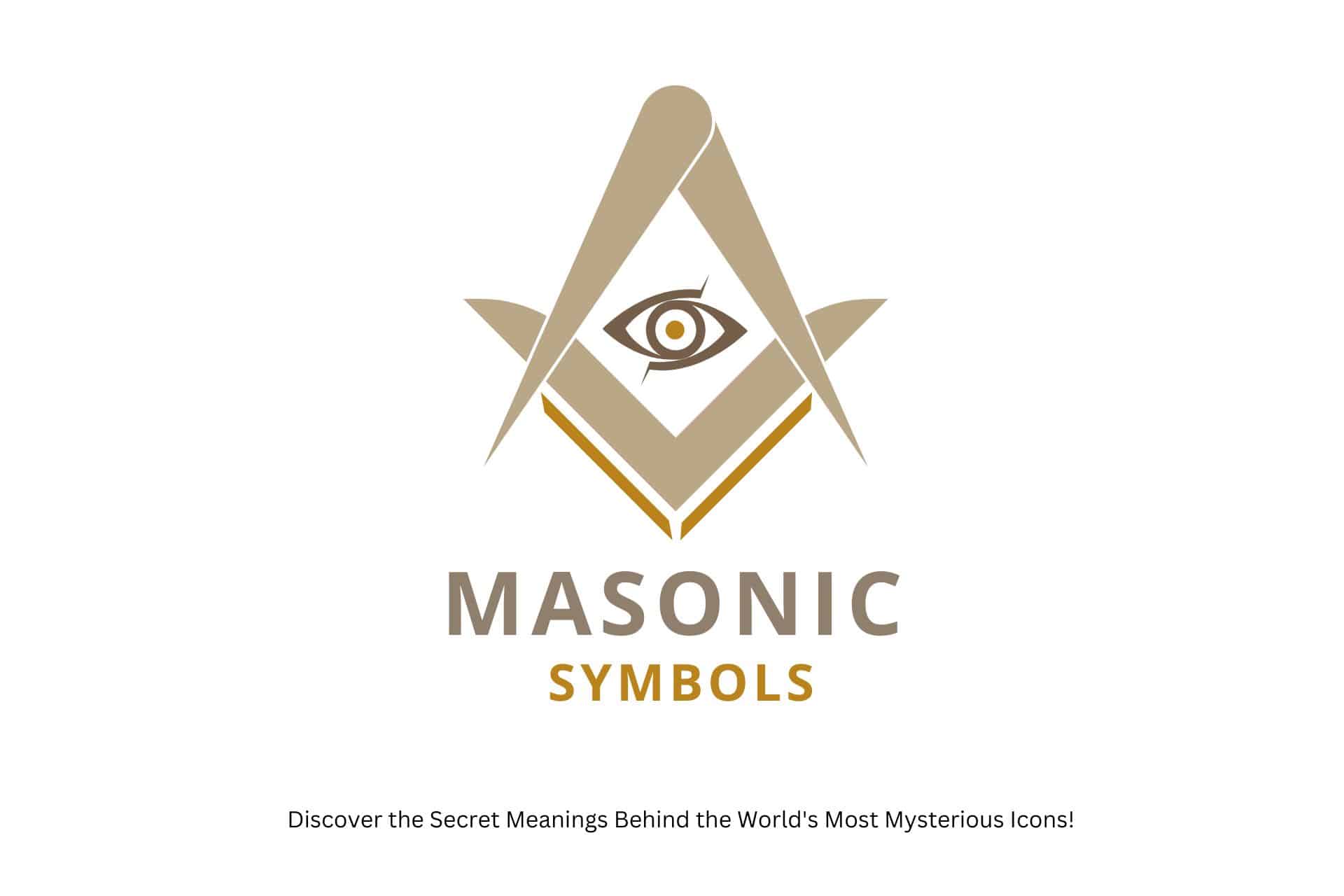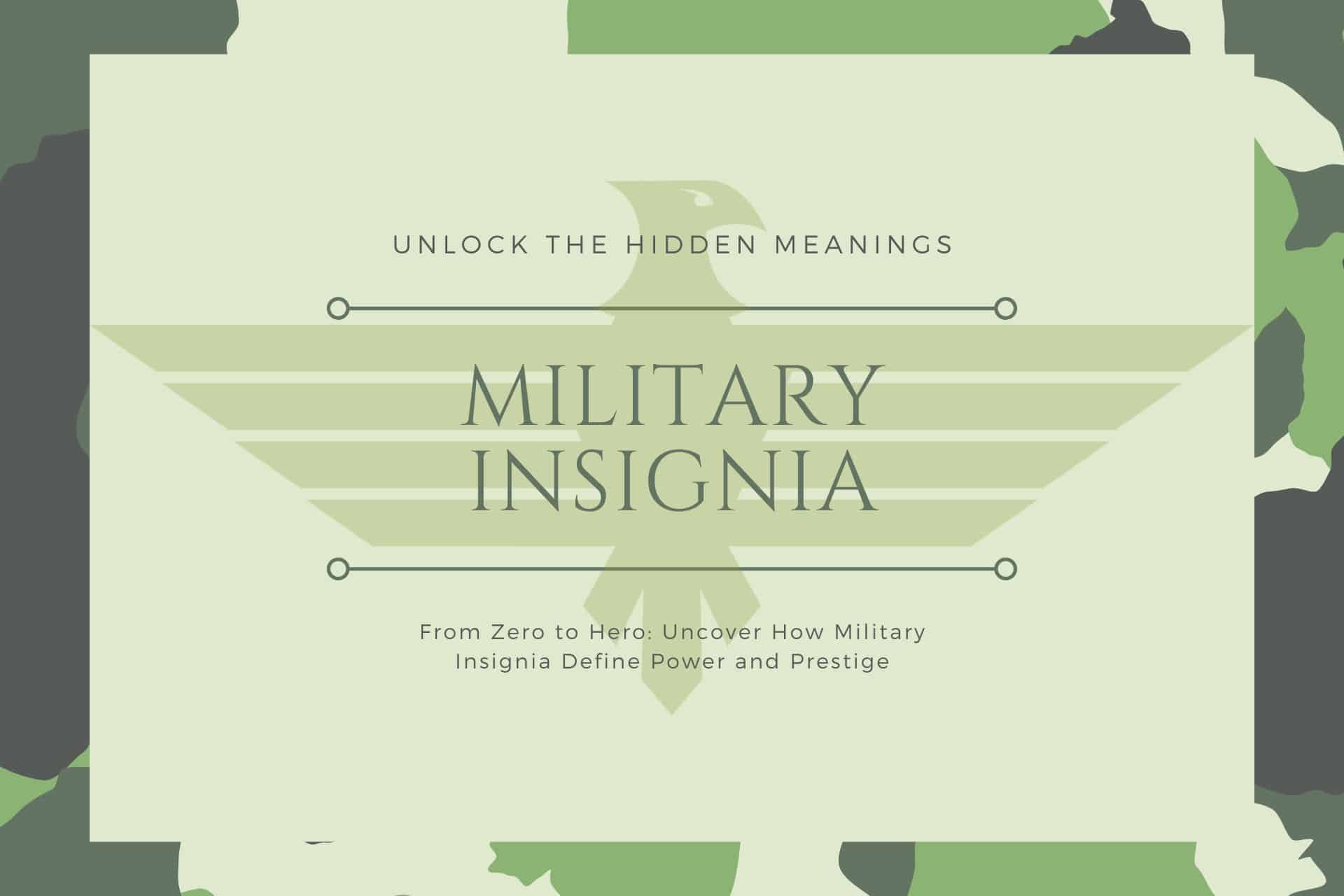Unlocking the Mysteries Behind Everyday Designs
Are you curious about the meanings behind everyday geometric shape symbols like circles, squares, and triangles? Have you ever wondered about their meaning or digital graphics?
This article is your guide to understanding their rich history and significance, simplifying the complex ideas they symbolize. You’ll gain practical insights into their diverse meanings, from unity and infinity to stability, change, and harmony.
So, are you ready to uncover the secrets of these geometric symbols that shape our world?
Keep reading to discover the power of geometry in design and pop culture.
Let’s get started!

Here’s What You Will Find

Key Takeaways
Geometric Shape Symbols
Meaning of Geometric Shapes: Geometric shapes like circles, squares, and triangles carry unique meanings. They symbolize unity, stability, and change, respectively, playing a pivotal role in conveying specific messages.
The Language of Geometry: The visual language of geometry uses shapes to represent various concepts. These include stability, balance, fairness, and unity, offering a mode of non-verbal communication.
The Cognitive Aspect: Recognizing geometric shapes involves sensory perception, neural processing, and cognitive understanding. This recognition process helps us understand the symbolic meanings of these shapes.
Importance in Design and Culture: Geometric shape symbols are vital in design and popular culture. They guide the viewer’s eyes, set the mood, and transcend cultural boundaries. These symbols have their roots in ancient civilizations and have evolved with advancing technology.
What are Geometric Shape Symbols?
Defining Geometric Shape Symbols
Geometric shapes are precise and regular forms defined by specific mathematical properties. As symbols, these shapes represent ideas, concepts, and entities in a simplified and universally recognizable form. Depending on its characteristics, each shape can carry distinct meanings and associations.
Geometric shape symbols are fundamental visual elements universally recognized and utilized across various cultures and disciplines. They comprise basic geometric figures such as circles, squares, triangles, and more complex forms, including polygons and abstract shapes.
They are more than mere representations of objects; they are imbued with deep symbolic meanings, serve as critical tools in communication, and play an essential role in artistic, scientific, and mathematical applications.
Types of Geometric Shape Symbols
Geometric shape symbols are not merely elements of mathematical study; they permeate various aspects of everyday life and serve as foundational symbols in cultural, spiritual, and technological contexts.
From the simple lines drawn in prehistoric caves to the sophisticated graphical interfaces in modern software, geometric shapes offer a visual language that transcends temporal and cultural barriers.
Here, we explore the primary types of geometric shape symbols, exploring their definitions, uses, and inherent symbolism.
Basic Shapes Symbols
Basic shapes are the core elements of geometric symbolism, each representing fundamental principles and conveying distinct messages:
- Circle: The circle symbolizes unity, wholeness, and infinity. It represents cycles such as seasons or life events without a beginning or end. Circles are omnipresent in nature and human-made objects, exemplifying perfection and inclusivity.
- Square: Emblematic of stability and balance, the square signifies solidity and reliability. Its equal sides symbolize fairness and groundedness, making it a preferred shape for icons requiring security, such as home icons in digital interfaces.
- Triangle: Triangles are associated with dynamism and change. An upright triangle can depict strength and stability (think of pyramids), while an inverted triangle might represent risk or instability. Triangles are also used to signify direction and movement, which is evident in road signs and navigational aids.
Regular Polygons Symbols
Expanding from basic shapes, regular polygons are multi-sided figures with equal angles and sides, each presenting unique symbolic attributes:
- Pentagon: Often linked with the human body’s proportions and health, the pentagon is also a critical shape in religious symbology, mainly represented in pentagrams, which symbolize the five elements.
- Hexagon: This six-sided figure is common in natural formations, most notably in honeycombs, symbolizing efficiency and natural harmony. It’s used in design and architecture to convey connectivity and environmental balance.
- Octagon: Universally recognized as the shape for stop signs, the octagon denotes caution and stopping. Its use in this context utilizes many sides and angles, effectively capturing drivers’ attention.
Curves and Spirals Symbols
Curves and spirals represent flexibility, growth, and continuity. They are visually soothing and are used extensively to create a sense of movement and progress:
- Ellipse: Seen as a stretched circle, an ellipse represents wider inclusivity and continuity. In astronomy, it models the planets’ orbits, symbolizing the universe’s expansive and cyclical nature.
- Spiral: The spiral stands for growth, evolution, and cosmic energy. From the spirals of galaxies in space to the pattern of a seashell, it reflects the natural form of growth and expansion seen in the universe.
Complex and Abstract Shape Symbols
These shapes break the mold by combining various elements or showcasing irregular forms, often used in modern art and symbolic representations:
- Star Shapes: From the Star of David to the intricate designs of snowflakes, star shapes convey a sense of the divine, the mystical, and the extraordinary. They are potent symbols in heraldry, religion, and contemporary branding.
- Crescent: Symbolic of change and transformation, the crescent moon is a powerful emblem in many world religions and flags, depicting control over change and cyclic nature.
- Heart: Beyond its romantic connotations, the heart shape is a universal symbol of love, charity, and compassion, resonating across cultures and languages.
Geometric Fractals Symbols
Geometric fractals are infinitely complex patterns that are self-similar across different scales. They represent chaos, complexity, and the unsolvable mysteries of nature:
- Mandelbrot Set: This set is a staple in mathematical graphics, symbolizing the intricate beauty of theoretical mathematics and the visual representation of complex systems.
- Sierpinski Triangle: This fractal design recursively subdivides triangles into smaller equilateral triangles, visually strikingly representing the concepts of infinity and self-similarity.
These categories of geometric shape symbols illustrate the diversity and versatility of these forms and their profound symbolic meanings. Whether simple circles or complex fractals, these shapes connect the practical with the profound, offering insights into human nature and the universe’s laws.
Understanding Geometric Shape Symbols
Let’s kick off our understanding of geometric shape symbols by exploring the visual language of geometry. You’ll see how these symbols are more than just drawings; they’re a universal language that our brains easily recognize.
Understanding this cognitive recognition is the key to unleashing the power of geometric shape symbols.
Visual Language of Geometry
In the complex and diverse landscape of geometry, one encounters a distinctive visual dialect composed of myriad geometric shape symbols. Each symbol carries a unique meaning and conveys a different concept.
This isn’t just a collection of disjointed shapes like triangles, rectangles, squares, and circles. Instead, they’re symbols that convey abundant information, and their importance extends beyond their simple geometric definitions.
- Triangles: In the world of geometry, a triangle often symbolizes stability. This is due to its structure, which is composed of three sides and three angles. The interconnection of these elements creates a strong and stable shape that’s difficult to distort without breaking the connections. This makes the triangle a perfect symbol of strength and resilience.
- Rectangles and Squares: These shapes are often associated with balance and equality because all their sides and angles are equal. They’re commonly used to represent fairness, balance, and equality concepts.
- Circles: Circles might symbolize unity or infinity due to their continuous, unbroken line, representing a never-ending cycle. This makes the circle a powerful symbol of eternity, wholeness, and completion.
This visual language of geometry isn’t just confined to the walls of a classroom or the pages of a textbook. It permeates every aspect of our lives, from architecture to art to graphic design.
- Architects: They use the visual language of geometry to draft blueprints and design buildings. This language helps them create aesthetically pleasing, structurally sound, and functional structures.
- Artists: Artists use geometric shape symbols to create masterpieces that evoke emotions and convey deep meanings. They use the visual language of geometry to bring their visions to life.
- Graphic Designers: In graphic design, geometric shapes craft logos and visual identities. These shapes help to convey the essence of a brand simply and effectively.
This language transcends borders and cultures, providing a universal means of communication. Understanding it doesn’t just enhance your geometric knowledge; it expands your perspective, giving you a new lens through which to interpret the world around you.
The freedom that comes with understanding this language is unparalleled. By learning this visual language, you can understand and interpret the world in a new light.
Cognitive Recognition
Cognitive recognition of geometric shape symbols is a fascinating process. It involves the complex interplay of our sensory organs, neural pathways, and mental faculties.
This process isn’t just about perceiving basic shapes and figures. It’s about understanding their symbolic meanings, relationships, and implications in a broader context. This process isn’t just a mere illusion. It’s a testament to the remarkable adaptability of our brains.
Let’s explore how our brain processes geometric shape symbols:
- Sensory Perception: This is the initial stage in which our eyes perceive geometric shapes. Light reflected from these shapes enters our eyes and forms images in our retinas. Our eyes aren’t just passively receiving these images; they’re actively involved in analyzing the shapes, orientations, and spatial relationships.
- Neural Processing: The images formed on our retinas are converted into electrical signals, which are then transmitted to our brains through our optic nerves. Several parts of our brain, particularly the visual cortex, further process these signals. They decipher the shapes, identify their features, and recognize their patterns.
- Cognitive Recognition: This is the final stage where our brains comprehend the symbolic meanings of geometric shapes. Through our experiences and cultural conditioning, our brains have learned to associate specific shapes with particular meanings. For example, we’ve learned to recognize that a red octagon usually means ‘stop’ and a green circle usually means ‘go.’
- Adaptability: Our brains are incredibly adaptable. They can learn and unlearn, remember and forget, construct and deconstruct. We’ve learned to distinguish between different geometric shapes, such as circles and squares, equilateral triangles, and scalene triangles, with ease and precision. This adaptability reflects our brain’s capacity for growth, change, and evolution.
- Symbolic Communication: Geometric shapes are a universal language. They transcend verbal language barriers and communicate with us directly and intuitively. They’re used in signs, symbols, logos, diagrams, maps, and art to convey information, express ideas, evoke emotions, and stimulate imagination.
- Exploration and Understanding: The world of geometric shapes is vast and diverse. There’s so much to explore, discover, and understand. With each exploration, we uncover hidden meanings, appreciate subtle nuances, and gain deeper insights. This process of exploration and understanding isn’t just intellectually stimulating; it’s also emotionally liberating.
The cognitive recognition of geometric shapes is indeed a remarkable phenomenon. It’s a testament to our brains’ incredible adaptability and our minds’ relentless quest for understanding. So, let’s keep exploring, keep learning, and keep growing. The geometric domain is ours to conquer.
Organizations Regulating These Symbols
Various international organizations monitor the use of geometric shape symbols. You may be curious about who supervises this process, and the answer is a conglomerate of global bodies.
The International Organization for Standardization (ISO) and the American National Standards Institute (ANSI) are two of the primary organizations involved in this process.
- The International Organization for Standardization (ISO): Headquartered in Geneva, Switzerland, ISO is an independent, non-governmental international organization that develops standards to ensure the quality, safety, and efficiency of products, services, and systems. It covers various sectors, including technology, food safety, agriculture, and healthcare. ISO was founded in 1947, and since then, it has published more than 23,000 international standards. These standards are developed through a consensus process involving stakeholders from all around the world.
- The American National Standards Institute (ANSI): Based in Washington, D.C., ANSI is a private non-profit organization overseeing voluntary consensus standards development in the United States. It represents the needs and views of U.S. stakeholders in standardization forums around the globe. Founded in 1918, ANSI’s mission is to enhance the global competitiveness of U.S. business and the U.S. quality of life by promoting and facilitating voluntary consensus standards and conformity assessment systems.
These organizations aren’t oppressive forces; quite the contrary, they respect and encourage individual freedom to innovate and create. They allow creativity to flourish while ensuring consistency and universal recognition. By setting standards, they ensure that the symbols you create are universally recognized, allowing your work to be understood and appreciated globally.
While these organizations offer you the liberty to express your creativity, it’s crucial to remember their role in facilitating communication and accessibility. They exist to support creators, not to limit them.
Their primary function is establishing standards that ensure your creations are as accessible and communicative as possible, bridging gaps and promoting understanding. Therefore, while you’re free to innovate, bear in mind these organizations’ functions and the support they provide to you.
How to Use Geometric Shape Symbols
Understanding how to use geometric shape symbols effectively can dramatically enhance the communicative power of your design. It’s not just about arranging them haphazardly. You’ve got to know when and where each shape fits best.
Let’s explore the meaning and usage of these symbols:
- Circles: The use of circles in design can be traced back to ancient cultures, which often used them to represent unity and completeness. In design terminology, a circle is a closed curve with all points equidistant from the center. This equality of distance represents equality, unity, and wholeness. Circles invite the viewer’s attention, drawing them into the sense of unity the shape exudes. They’re perfect for logos that aim to convey a sense of wholeness. Companies that want to portray themselves as complete and unified often incorporate circles into their logos. For instance, the famous Starbucks logo uses a circular design to represent the global nature of its business.
- Squares: Squares are another popular design choice. Due to their four equal sides, they’re often associated with stability and reliability, giving a sense of balance and solidity. Squares are frequently used in architectural designs because of the structure and strength they signify. They’re also handy in grid-based designs because they can easily be divided into smaller, equally sized-squares. This makes them ideal for building a versatile and consistent layout.
- Triangles: Due to their sharp points, triangles are dynamic geometric shapes that can suggest direction and movement. These shapes can guide the viewer’s eye in a specific direction or suggest a sense of progression or development. Whether pointed upwards or downwards, triangles carry a sense of motion and force. They’re ideal for designs that evoke a sense of action or progression.
- Polygons: Polygons, such as hexagons, are shapes composed of multiple straight lines. These shapes can symbolize structure and balance, as the multiple sides can create a sense of harmony and equilibrium. They’re often used in complex designs, such as intricate patterns or detailed graphics. Hexagons, mainly, are popular in designs due to their symmetry and balance.
- Irregular shapes: Irregular shapes don’t follow the traditional geometric rules – they can have any number of sides, and these sides don’t need to be of equal length. These shapes can evoke creativity and freedom as they break away from the norms of traditional geometry. They’re best for artsy and innovative designs, as they can create a sense of unpredictability and spontaneity. Irregular shapes can add a unique, artistic flair to a design or create a more relaxed, casual feel.
Uses of Geometric Shape Symbols
Geometric shape symbols are versatile and fundamental in numerous fields, reflecting their broad applicability and functional significance. Here are some key uses of these symbols:
- Communication Tools: Geometric shapes are used as universal signs and icons, facilitating clear and instant communication across different languages and cultures. For example, circles, triangles, and squares in traffic signs convey rules and warnings efficiently.
- Educational Aids: Shapes help illustrate complex concepts in subjects like geometry, physics, and art in educational contexts. They simplify abstract ideas into visual forms that are easier to understand and manipulate.
- Architectural Design: Architects use geometric shapes not only for aesthetic appeal but also for structural integrity. Shapes like triangles in trusses or rectangles in flooring ensure stability and functionality in building designs.
- Artistic Expression: Artists employ geometric shapes to convey deeper meanings or to evoke specific emotions. From Renaissance art to modern abstract compositions, shapes form the basis of visual creativity.
- Spiritual and Religious Symbolism: Many cultures use geometric shapes in religious contexts to represent philosophical concepts or divine attributes. For instance, the mandala in Hinduism and Buddhism symbolizes the universe and spiritual journey.
- Brand Identity: Corporations often incorporate geometric shapes in logos to communicate stability (squares), innovation (spirals), or connection (circles), subtly influencing consumer perceptions.
- Technological Interfaces: Geometric shapes are integral to digital user interfaces, helping users navigate software, apps, and websites effectively.
- Fashion and Decor: Geometric patterns influence fashion and interior design trends, offering timeless appeal and bold visual interest through repetitive motifs.
- Scientific and Mathematical Visualizations: Shapes are crucial in graphing data, modeling phenomena, and solving equations, providing a clear framework for scientific inquiry and mathematical proof.
These applications showcase the importance of geometric shape symbols in organizing, beautifying, and clarifying human environments and experiences across various spheres of life.
You’ve learned about geometric shape symbols. Now, let’s see them in action.
Consider how often you encounter these symbols in real life. From road signs to architectural designs, you’ll find that these symbols aren’t just for textbooks; they’re integral to our daily lives.
Real-Life Examples of Geometric Shape Symbols
Geometric shape symbols significantly impact everyday life, facilitating communication, ensuring safety, and enhancing design aesthetics. Here are some streamlined examples:
- Traffic Signs: Shapes are crucial in traffic regulation; circles often denote continuous regulations like speed limits, triangles warn of road hazards, and the distinctive octagonal shape of stop signs ensures visibility and immediate recognition.
- Architectural Blueprints: In building designs, rectangles, and squares symbolize doors and windows, respectively, reflecting their real-life dimensions and orientations, which is essential for anyone interpreting architectural plans.
- Corporate Branding: Major brands use geometric shapes for their logos; Apple’s logo simplifies to an apple shape with a bite mark, while McDonald’s ‘Golden Arches’ form an ‘M’ using two arches, effectively using geometry to convey brand identity.
- Digital Interfaces: User-friendly digital interfaces utilize geometric icons for functionality; for instance, the trash bin icon typically appears as a rectangle or cylinder, and the save icon resembles a floppy disk.
- Natural Patterns: Nature uses geometry, such as bees constructing hives with hexagonal cells, optimizing space and material use. This illustrates the efficiency of geometric design in natural engineering.
These examples underscore geometric shapes’ ubiquitous and versatile role in practical applications, from human-made environments to natural phenomena.
Why are Geometric Shape Symbols Important?
Geometric shape symbols are essential due to their universal language and ability to simplify complex information. Here’s a condensed look at their significance:
Visual Shorthand
Geometric shape symbols serve as visual shorthand, allowing for the quick and efficient expression of ideas. This is crucial in our fast-paced world where quick comprehension is valued. These symbols distill complex information into digestible visual forms that transcend language barriers, making them indispensable in global communication.
Transcending Borders
These symbols are universally recognized. For example, a red octagon for ‘stop’ is understood worldwide, regardless of the local language, facilitating international travel and commerce and promoting global unity.
Simplification of Complex Ideas
In academia, particularly mathematics and physics, geometric shape symbols help illustrate abstract concepts, making them more accessible. A circle might represent a planet in scientific diagrams, while a triangle could symbolize relationships in mathematical theories.
Essential in Design
In design, geometric shape symbols guide the viewer’s eye and influence the aesthetics and emotional tone of the artwork. Sharp, angular shapes can convey dynamism or tension, whereas soft, rounded forms might evoke a sense of calm and safety.
These aspects highlight the profound impact of geometric shape symbols in fostering understanding and efficiency across various disciplines and cultures.
History of Geometric Shape Symbols
Geometric shapes are used as symbols, and they have a rich and diverse history that spans cultures and millennia, reflecting their deep-rooted significance in human civilization.
Ancient Beginnings
Geometric symbolism began prehistoric times when early humans used simple shapes like circles, triangles, and lines in cave paintings and carvings to represent natural phenomena, celestial bodies, and daily activities. These shapes were artistic expressions and served as early communication tools.
Cultural Evolution
In ancient Egypt, geometry was intertwined with religion and art. Pyramids and obelisks employed geometric principles and shapes symbolizing divine concepts and celestial alignments. Similarly, philosophers like Pythagoras and Euclid explored geometry mathematically and philosophically in ancient Greece, imbuing shapes like the golden rectangle and the spiral with profound spiritual significance.
Religious and Mystical Significance
Geometric shape symbols have significant mystical and religious meanings in various traditions. In Christianity, the circle’s endlessness represents eternal life, while Islamic art’s complex geometric patterns convey Allah’s infinite nature without depicting human or animal forms.
Modern Applications
With the onset of the modern era, geometric shapes gained prominence in art and architecture, mainly through movements like Bauhaus and Art Deco, which emphasized simplicity and functionality. These symbols continue to evolve in digital technology and are critical elements in graphic interfaces and user-friendly design.
From ancient carvings to modern logos, geometric shapes have traversed a vast historical landscape, continuously serving as fundamental, powerful tools in visual communication and symbolic expression. This enduring relevance underscores their universal appeal and deep-seated utility in human culture.
Origin of Geometric Shape Symbols
The fascinating journey of geometric shape symbols can be traced back to ancient civilizations, where they were first used in various ways. These symbols, which we now take for granted in math and design, came into existence thanks to the efforts of these early societies.
The Egyptian civilization, known for its advanced understanding and implementation of geometric shapes, pioneered in this regard. These shapes were a prominent feature of their hieroglyphic script, a writing system that combined logographic, syllabic, and alphabetic elements.

Their hieroglyphs often incorporated simple geometric shapes, such as squares, circles, and triangles, to depict specific objects or concepts.
For instance, the triangle, an emblem of stability and permanence in the physical world, symbolizes a pyramid or mountain. The use of these shapes in their hieroglyphs demonstrated a sophisticated understanding of geometry and its practical applications, far ahead of their time.
The Ancient Greeks, recognized for their contributions to philosophy, science, and mathematics, expanded upon using geometric shapes, particularly in mathematics. They introduced more complex shapes, such as the dodecahedron, icosahedron, and octahedron, significantly developing geometric theory. Famous Greek mathematicians like Pythagoras and Euclid made significant contributions to geometry, with Euclid’s ‘Elements’ laying the groundwork for much of modern mathematical thought.
The Romans were also instrumental in the evolution of geometric shapes. They incorporated these symbols into their architecture, a testament to their engineering prowess. Roman architects used geometric shapes like semicircles, rectangles, and arches, which is evident in structures like the Colosseum and the Pantheon. These shapes not only added aesthetic value but also contributed to structural integrity, demonstrating the Romans’ understanding of the practical applications of geometry.
The Renaissance saw a resurgence of interest in geometric shapes, with artists and scholars rediscovering and infusing these symbols into their works. Artists like Leonardo da Vinci and Albrecht Dürer used geometric principles in their art, contributing to the development of perspective and proportion. Scholars also studied and translated ancient Greek mathematical texts, further enhancing their understanding of geometry.
Historically, geometric symbols have been digitized and become an integral part of modern technology. They’re used in computer graphics, web design, and digital art, demonstrating their versatility and continued relevance. Today, these symbols are used to create visually appealing and user-friendly interfaces, and their importance in various fields continues to evolve.
Usage in Popular Culture
Geometric shape symbols appear more often in popular culture than you might think. They’re in everything from logos and product designs to movies and fashion.
Usage in Everyday Life
In our fast-paced, everyday life, the importance of geometrical shape symbols is often underestimated. These symbols, far from mere designs, carry a substantial significance and frequently surface in popular culture in ways that may go unnoticed. Their universal language transcends cultural or linguistic barriers, making them an efficient communication tool. They’re abundantly present around us, subtly influencing our decisions, tastes, and lifestyles.
The circle, for example, is a shape that symbolizes unity and harmony. This is evident in logos such as that of Pepsi’s famous beverage brand. The Pepsi logo comprises a circle with a wave running through the middle, dividing it into two halves. The circle here is intentional, aiming to promote a sense of inclusivity and togetherness. It’s a visual representation of the brand’s goal to unite people from different walks of life through a shared love for their product. This characteristic of unity is an inherent attribute of circles, making them a popular choice for brands that aim to foster a sense of community.
Squares, on the other hand, denote stability and balance. This is commonly found in technology logos, such as Microsoft. Microsoft’s square logo is divided into four smaller squares, each containing a different color. This design visually represents the diversity of Microsoft’s product range and subtly conveys the company’s promise of delivering balanced and stable solutions. It’s a perfect instance of how geometric shapes like squares can impart a sense of reliability and trustworthiness.
Triangles are often used to represent power and progression. This can be seen in the logo of the sportswear brand Adidas, which features three stripes arranged to form a triangle. This geometric design symbolizes the brand’s commitment to continuous growth and advancement in sports. The triangle’s upward direction is a metaphor for upward movement or progression, resonating with the brand’s mission.
Hexagons are also widely used, symbolizing efficiency and communication. An excellent example of this is the logo of the dating app Bumble. The hexagonal shape of the Bumble logo exemplifies the brand’s focus on creating efficient and effective communication pathways for its users. The hexagon, with its interconnected sides, perfectly encapsulates the brand’s aim of fostering connections and interactions.
Finally, stars, representing aspiration and quality, grace countless national flags and insignias. They capture the spirit of ambition, progress, and excellence, making them ideal symbols of national pride and achievement.
Last Thoughts
So, you’ve journeyed through the world of geometric shape symbols. They’re not just simple shapes but carry a depth of meaning, are regulated by organizations, and are used in various fields. They’re essential, with a rich history and even a splash in pop culture. Now, you understand their significance and how to use them. Keep exploring, and you’ll find geometric shape symbols fascinating.
Before You Go
We encourage you to share the insights and information you’ve gleaned from this article with others. Spreading knowledge about geometric shape symbols can help foster a greater understanding and appreciation for their role in our world. Whether it’s with a friend, a co-worker, or on your social media platforms, don’t hesitate to share. You never know who might find this information invaluable.
Check Other Geometrical Shape Symbols
- Basic Shapes
- Regular Polygons
- Curves and Spirals
- Complex and Abstract Shapes
- Geometric Fractals
More on Symbols
History of Symbols: How Ancient Marks Shape Our Modern World!
From Cave Walls to Emojis—A Journey Through Time Have you ever wondered about the history of symbols? Maybe you’ve wondered about their global variations or how they’ve shaped our world. Prepare to have your curiosity …
Check it Out!Tattoos and Their Secret Powers: How Ink Can Change Your Life!
Exploring the Art, Meaning, and Culture of Ink! Are you intrigued by tattoos? Are you curious about the stories they tell and the intricate details they contain? Look no further. You might be wondering about …
Check it Out!Masonic Symbols Unlocked: Discover the Secret Meanings Behind the World’s Most Mysterious Icons!
The Hidden Powers and Ancient Secrets You Never Knew! Are you intrigued by masonic symbols and their profound meanings? Perhaps you’ve seen the square, compasses, or the all-seeing eye and wondered about their significance? Thankfully, …
Check it Out!Military Insignia: Unlock the Hidden Meanings Behind These Powerful Symbols
From Zero to Hero: Uncover How Military Insignia Define Power and Prestige Are you curious about the meaning behind military insignia or rank emblems? Have you ever wondered about their significance or history? This comprehensive …
Check it Out!More Symbols

















